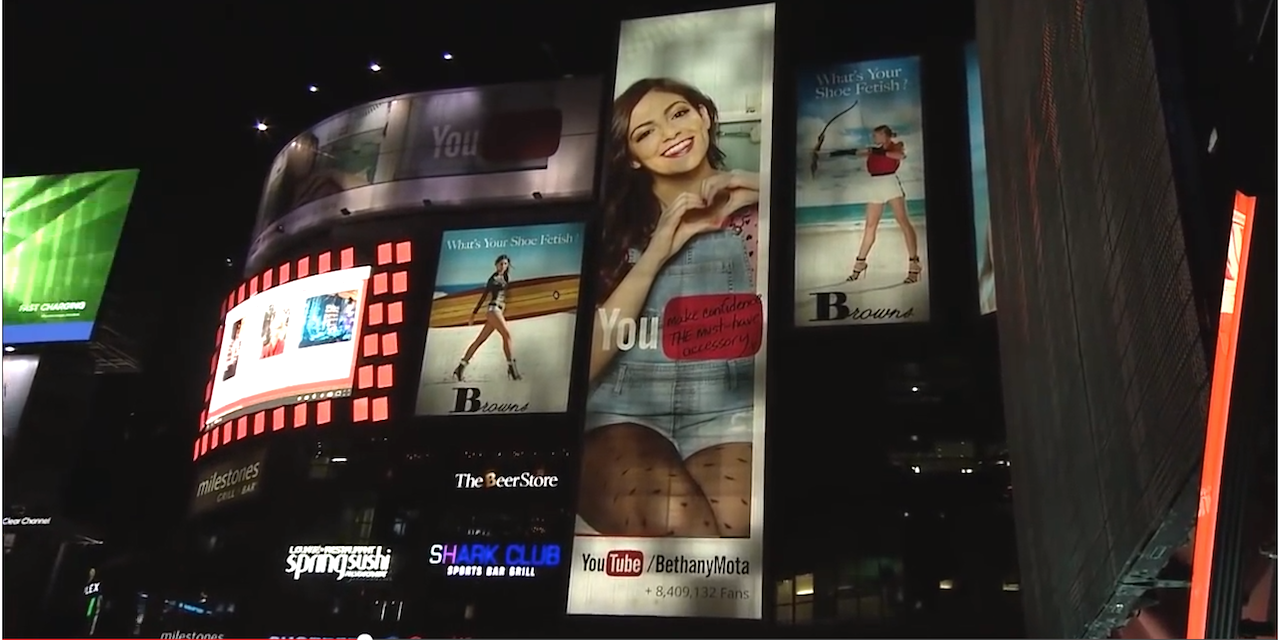When Bethany Mota walked on stage in Toronto’s Yonge-Dundas Square on May 2, some 15,000 young people screamed. Mota, a video blogger with 9.6 million subscribers, was one of the main attractions for YouTube FanFest. She was greeted like a bona fide pop star.
That’s because Google’s YouTube has, in many ways, become the epicentre of pop culture in the connected world. It’s been building toward this for years — since before Charlie bit his brother’s finger — but in 2015 Google Canada made a number of important moves to improve YouTube content for viewers, grow that viewer base overall and make it easier for marketers to find and connect with their target consumers from within that growing audience.
For the first time this year, Google made a concerted effort to “really market the business of YouTube in Canada,” said Fab Dolan, head of marketing, Google Canada.
“It was a big turning point for us to say, ‘It is about time we start investing in this local market.’” FanFest, proof of the star-power and advertising value of YouTube “creators” like Mota, was the most visible manifestation of that, supported by a massive, decidedly analog, outdoor campaign.
Beyond that, YouTube Hits was also created through a partnership with Rogers Radio and sees YouTube stars showcased through a weekly one-hour terrestrial radio show on Rogers’ younger-skewing stations. For the Federal election, a Canada Elections Hub was created and three of the leadership debates were streamed.
For advertisers, YouTube introduced “Cards” that let brands share product information within YouTube videos, and “Shopping ads” let advertisers show a click-to-buy ad within partner videos.
Google also piloted “Programmatic Guaranteed” in Canada, letting advertisers apply remarketing data and tactics to guaranteed inventory to better target consumers. CPMs are about 10 times the open auction prices, says Google.
But, says Dolan, “by far the single biggest thing” Google Canada did this year was introduce Google Preferred.
According to Google, Canadians upload more content to YouTube each month than major Canadian networks broadcast in 10 years. That volume is remarkable, but figuring out where in that surging ocean of new content to put your advertising can be tough.
“We know the audience is there, for sure, and the content is interesting, but how accessible is that if you are an everyday marketer,” said Dolan.
So Google did what it does best: create an algorithm. In this case, it identifies the most popular video content on YouTube among the 18-34 audience. Advertisers can buy the top 5% of video content across 13 categories: beauty, food, cars, sports etc. Google Preferred was introduced to the U.S. in 2014 and rolled out in Canada this year.
“Google Preferred not only gives you the full power of the platform but gives you an equivalent to prime time viewing on traditional platforms… And you’ve never really had that before in such a simple way, so that you could buy kind of like upfront buys,” said Dolan.
“In a word, it is about simplicity.”











